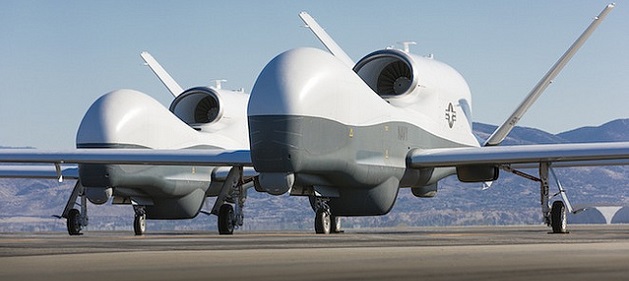Flight of the Drones

The Australian government confirmed its commitment to improving maritime surveillance capabilities by announcing the planned acquisition of the Triton Unmanned Aerial Vehicle (UAV). The Triton’s ability to sweep large areas of sea to monitor the naval movements of Australia’s regional neighbors, asylum seeker boats and unlawful intrusions will significantly boost Australia’s maritime capabilities. The timing of the purchase, in addition to the total number, will not be revealed until 2016 after the release of the 2015 White Paper.
The drones, which will be located at the RAAF Base Edinburgh in Adelaide, are expected to cost around $2-3 billion. This naturally sparked another debate over whether Defence can afford such an expense when, with the release of the Commission of Audit report and according to the Government itself, Australia is facing a dire economic future. The government was quick to stave off these criticisms by touting the important economic spin-offs of this acquisition will have, specifically the propping up of South Australia’s economy by $100 million dollars.
Nonetheless, it seems that the clock is ticking for Australia to replace the RAAF’s ageing fleet of P3 Orions that patrol the vast oceans of Australia and have most recently been doing much of the work involved in searching for missing flight MH370. Drones, which will no doubt become a more ubiquitous technology in the future, fit nicely into Australia’s long-term capability needs. This investment is about ensuring Australia can protect and advance its strategic interests in what will be a more challenging regional environment. This reality was echoed in the press conference as being integral that Defence has “the right equipment to maintain an edge over potential adversaries.” The Chief of Air Force, Air Marshal Geoff Brown, echoed this sentiment stating that the Tritons will “revolutionise…maritime surveillance.”
Drones have significant dual-use potential with the ability to patrol and monitor the oceans for illegal fishing boats and asylum seeker arrivals, to support the conduct of search and rescue operations and to protect offshore oil and gas assets. The government has noted that this capability will have the ability to work closely with other existing and future ADF assets to protect and patrol Australia’s oceans, borders and offshore resources. The Triton will compliment the eight recently purchased manned surveillance P-8 Poseidon aircraft.
Peter Layton questions whether the Triton, which is less suited to overland tasks and survival in high-air threat environments, will deliver enough bang-for-our-buck. The strategic value of UAVs is an important discussion. UAVs lack the situational awareness of a human pilot who can respond to rapidly changing operational environments. This, according to Malcolm Davis, limits their utility and strategic value in conflict situations.
UAVs are a highly politicised procurement for ethical and legal reasons rather than their effectiveness as a military instrument. The recent announcement that an Australian was killed last November by a US drone strike has generated significant controversy. Even former PM Malcolm Fraser chimed into the debate arguing that Australian military and intelligence personnel involved could “face crimes against humanity charges.”
Liz Placanica is an intern at the Australian Institute of International Affairs National Office and post-graduate student at the Australian National University. She can be reached at intern7@internationalaffairs.org.au


